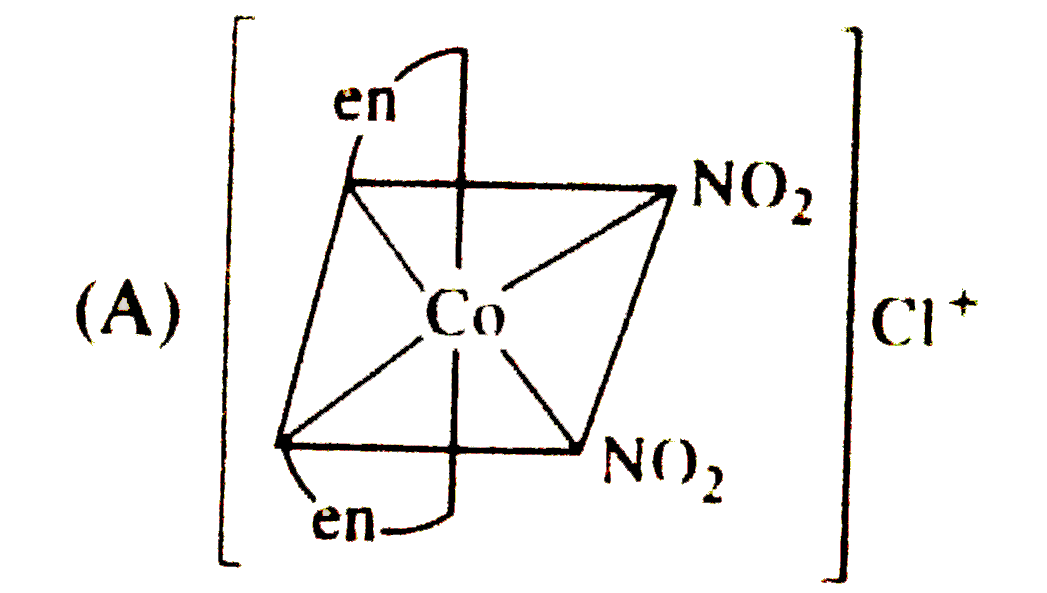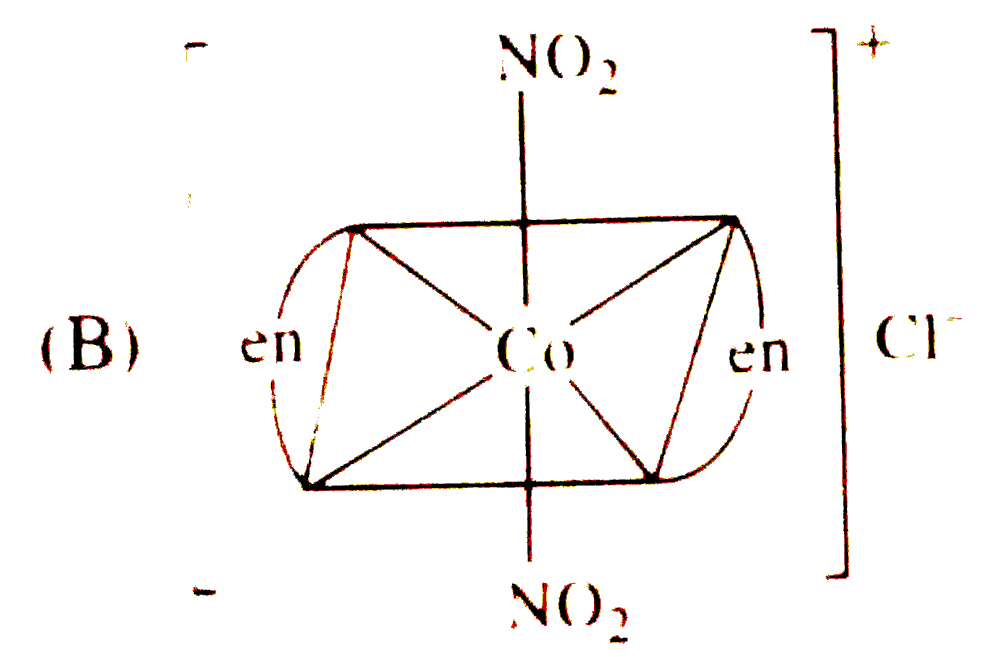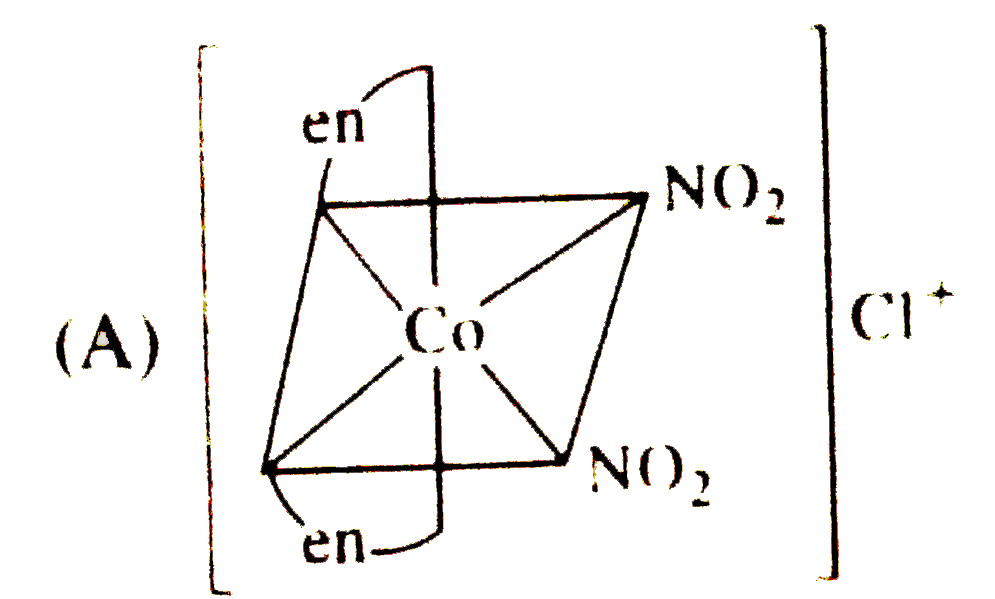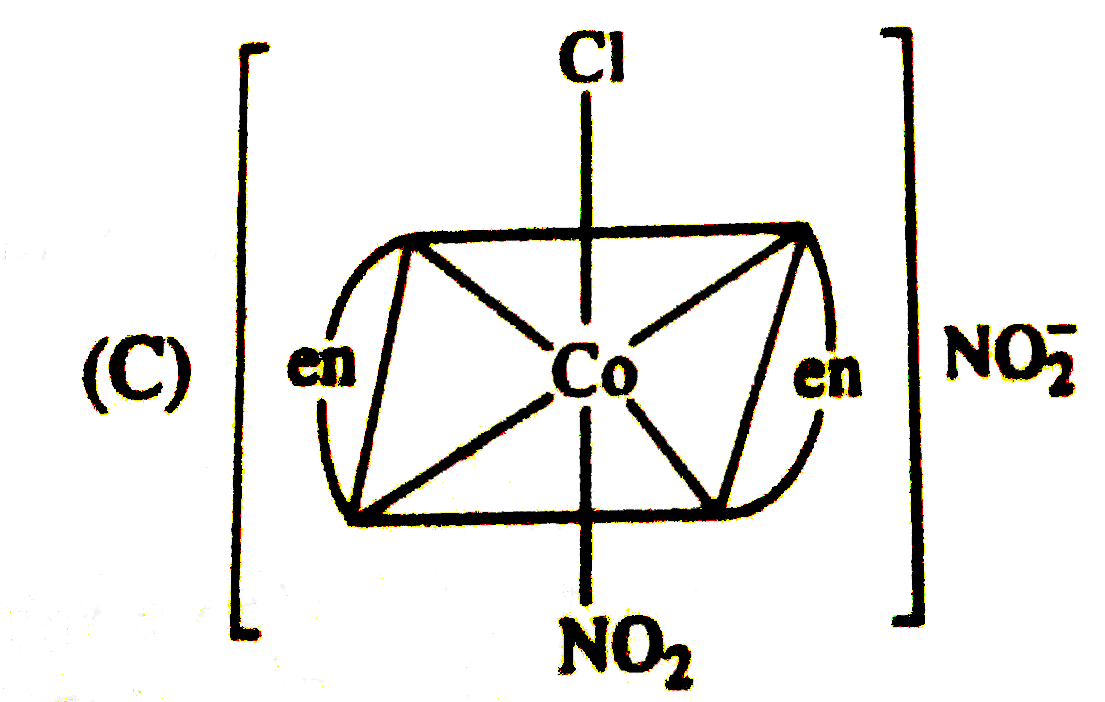A compound CO(en)2NO2Cl has been prepared in a number of isomeric form . One form undergoes no reaction with AgNO3 or (en) and is optically inactive. A third form is optically acitve and reacts with both AgNO3 and (en) complexes are

bis-bis (ethylenediamine) dinitrocobalt (III) chloride.

trans -bis (ethylyenediamine) dinitrocobalt (III) chloride.

trans chloronitrobis (ethylendiamine)cobalt (III) nitrite.
First form of the complex is
A
B
C
none of these
The correct Answer is:C
Topper's Solved these Questions
- CO-ORDINATION COMPOUNDS BOOK - DINESH PUBLICATIONCHAPTER - CO-ORDINATION COMPOUNDS EXERCISE - MATRIX MATCH TYPE MCQS
3 Videos
- CO-ORDINATION COMPOUNDS BOOK - DINESH PUBLICATIONCHAPTER - CO-ORDINATION COMPOUNDS EXERCISE - INTEGER TYPE QUESTIONS
5 Videos
- CO-ORDINATION COMPOUNDS BOOK - DINESH PUBLICATIONCHAPTER - CO-ORDINATION COMPOUNDS EXERCISE - SELECTED STRAIGHT OBJECTIVE TYPE MCQS
84 Videos
- CHEMISTRY IN EVERY DAY LIFEBOOK - DINESH PUBLICATIONCHAPTER - CHEMISTRY IN EVERY DAY LIFEEXERCISE - Unit test-9
50 Videos
- CYANIDES, ISOCYANIDES, NITROCOMPOUNDS AND AMINESBOOK - DINESH PUBLICATIONCHAPTER - CYANIDES, ISOCYANIDES, NITROCOMPOUNDS AND AMINESEXERCISE - Unit test - 8
20 Videos
Similar Questions
The compound Co(en)2(NO2)2CI has been prepared in these isomeric forms A,B and C A does not react with AgNO3 or (en) and is optically inactive B reacts with AgNO3 but not with (en) and is optically inactive C is optically active and reacts with both AgNO3 and (en) identify each of these isomeric forms and draw their structures .
View SolutionThe compound Co(en)2(NO2)2CI has been prepared in these isomeric forms A,B and C A does not react with AgNO3 or (en) and is optically inactive B reacts with AgNO3 but not with (en) and is optically inactive C is optically active and reacts with both AgNO3 and (en) identify each of these isomeric forms and draw their structures .
View Solution
Knowledge Check
A compound CO(en)2NO2Cl has been prepared in a number of isomeric form . One form undergoes no reaction with AgNO3 or (en) and is optically inactive. A third form is optically acitve and reacts with both AgNO3 and (en) complexes are

bis-bis (ethylenediamine) dinitrocobalt (III) chloride.

trans -bis (ethylyenediamine) dinitrocobalt (III) chloride.

trans chloronitrobis (ethylendiamine)cobalt (III) nitrite.
One of the complexes starch iodide paper blue in acidic medium . This comples isACBBCADall of these .The chloro-bis (ethylenediamine) nitro cobalt (III) ion is –
A[Co(NO2)2(en)2Cl2]+B[CoCl(NO2)2(en)2]+C[Co(NO2)Cl(en)2]+D[Co(en)Cl2(NO2)2]−Tris (ethylenediamine) cobalt (III) cation, [Co(en)3]3+, can have
A(a) three stereoisomers, all chiral and optically activeB(b) two chiral stereoisomers (enantiomers) and one achiralC(c) three stereisomers, all archiralD(d) two stereoisomers, both achiral
Draw one of the geometrical isomers of the complex [Pt(en)2Cl2]2+ which is optically inactive.
View SolutionThe coordination number of cobalt in tris(ethylendiamine) cobalt(III) ion, [Co(en)3]3+ , is
View SolutionWhich of the following complexes shows optical isomerism ?
(en=ethylenediamine )
View SolutionAssertion. Trans [CoCl2(en)2]+ is optically inactive.
Reason. It is an octahedral complex.
View SolutionWhich one of the following complexes shows optical isomerism ?
(en=ethylenediamine)
View Solution
